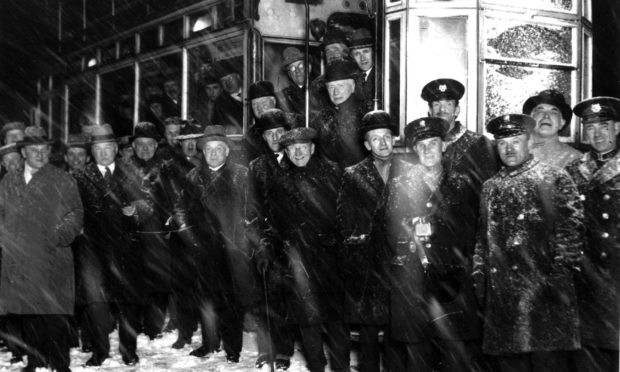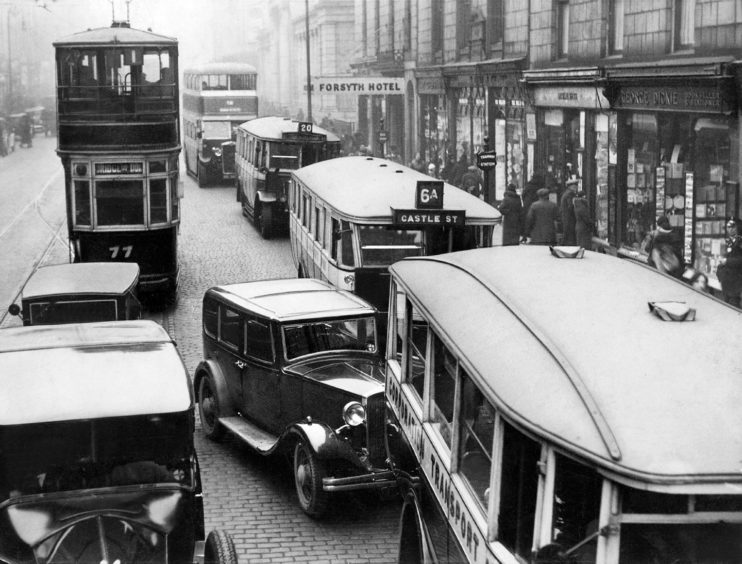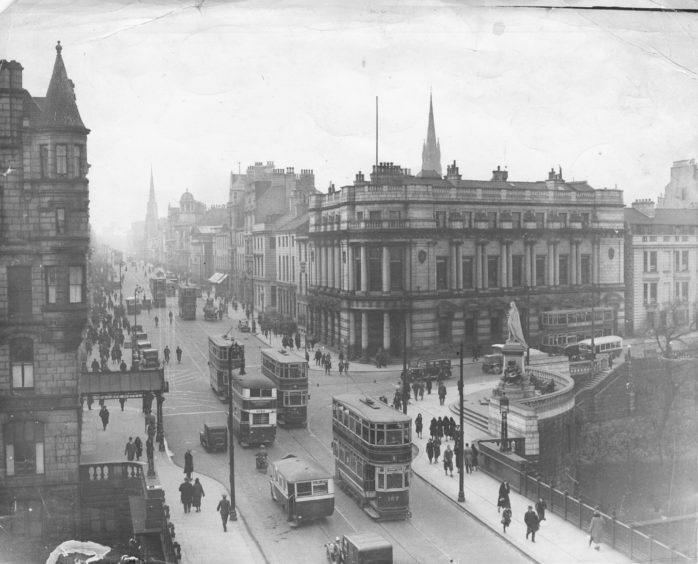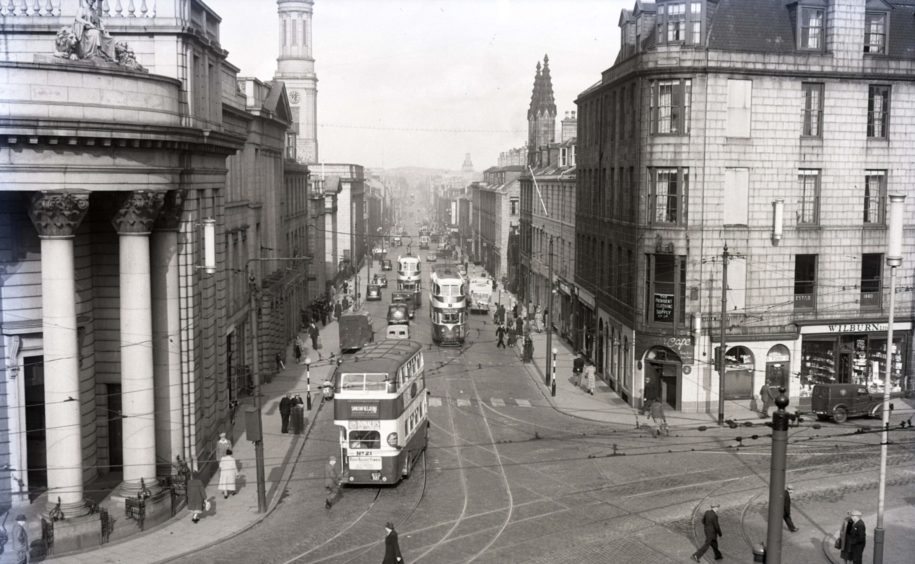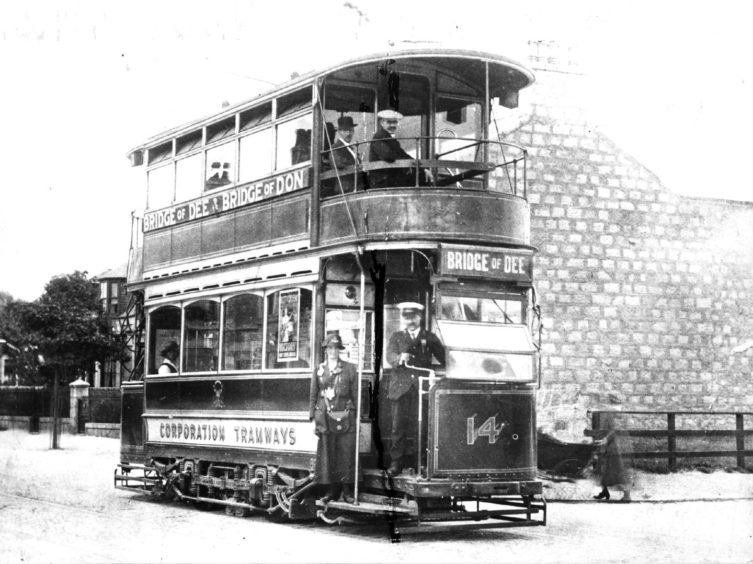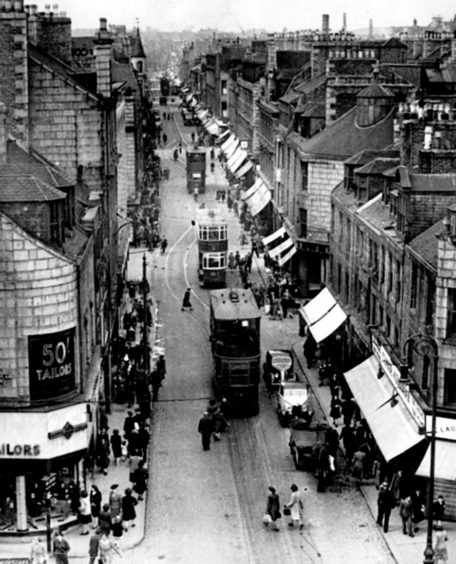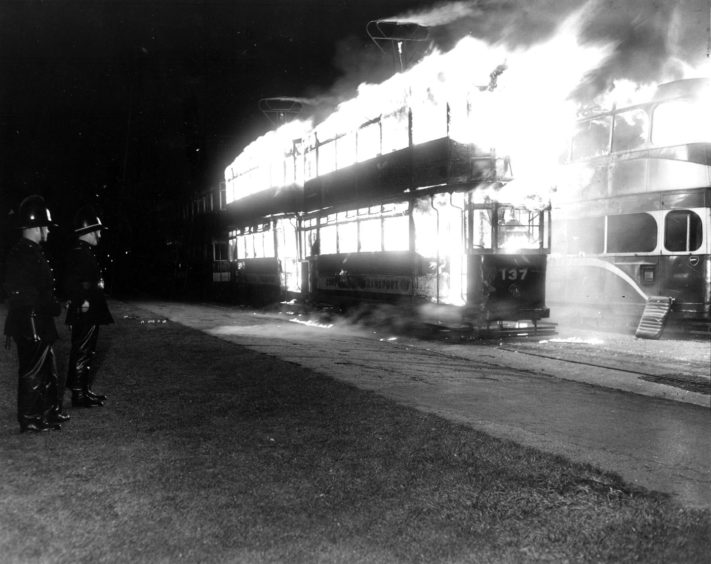They turned out in the teeth of a howling blizzard to mark a special moment in Aberdeen’s history… the last tram to run from Torry.
The dignitaries, staff and ordinary folk who gathered around as snow piled up on the waiting tram on February 28 1931 thought they were saying goodbye to one unexceptional spur of the Granite City’s transport network.
Little did they know the factors which made the Torry line the first city tram service to be axed foreshadowed the demise of the entire network – ending in a bonfire of obsolete trams at Aberdeen Beach in 1958.
But 90 years ago, tram travel was still at its height and the fate of the Torry line, opened in 1903, was seen as something of an anomaly.
Transport historian Keith Jones said: “Torry was an odd route and there were lots of circumstances coming together that led to its closure.
Market Street was congested
“The tram service didn’t run through to Castlegate or anywhere else. It was basically Bridge Street to Guild Street, along the quays over the bridge then out to Torry, then up to the terminus at top of Victoria Road.
“There was a single track line along South Market Street with a couple of passing places. But also along South Market Street was the harbour and the fish market, so even going back to the early years of the 20th century, South Market Street was congested and the tramway added to issues.”
Keith pointed out many parts of Torry were not served by the tram, such as Menzies Roads and out towards Craiginches, prompting complaints that those areas should be better catered for.
That meant by the 1920s several private bus operators found Torry fertile ground and started drawing passengers away from the tram. At the same time, the city corporation was expanding housebuilding in Torry, then started running their own cross-city buses to serve the new communities of Garden City and Hilton.
Keith said that while early buses were small and flimsy, later ones were larger, more robust and could carry more passengers.
“By about 1928, the council had acquired much bigger buses, able to transport more people more quickly and by 1930 the first double deckers were appearing,” said Keith.
No-brainer Torry trams should be replaced
“Buses could serve much more of Torry than could the trams and could extend routes across the city. At about the same time, they were talking about the tram track needing renewal as well. It was probably a no-brainer the Torry trams should be replaced by buses.
“The Torry tram was condemned by a combination of circumstances. The two big issues were the congestion on Market Street, but perhaps more importantly the expansion of the housing schemes away from the tram routes, which meant the council was running buses which were competing with their own trams.”
Keith said the ending of the Torry tram line was seen as an occasion for celebration by many people.
“It was a case of out with the old, in with the new.”
That said, the fall of the Torry line was much like the first domino falling for Aberdeen’s trams. Ferryhill vanished later that year for similar reasons.
It would be several more years until the next line closed, with Mannofield folding in 1951. But then they vanished in quick succession, Rosemount in 1954, Woodside in 1955, Woodend in 1956, and the last Aberdeen tram came off the rails in 1958.
Keith said: “The decision to close these routes meant that, effectively, the way the city was growing the corporation was running buses competing with their own trams. The development of the city was such that the buses could serve additional areas away from the tramway.
Development led to their demise
“It was a similar pattern to what happened in Torry. There were new developments, tram rolling stock and infrastructure was beginning to require renewal. The capital cost of, say, 10 new buses was far less than the cost of buying 10 new trams, and without the fixed infrastructure that required constant maintenance.
“It was the development of the city that very much led to the demise of the trams.”
And so it was trams paraded along Union Street for the last time. The vehicles were taken down to the beach and burned down to be sold for scrap metal – their only value to the Granite City.
But the funeral pyre for the trams that saw flames dance high into the darkness on that spring night in May 1958 were first sparked in a blizzard in Torry in February 1931.
